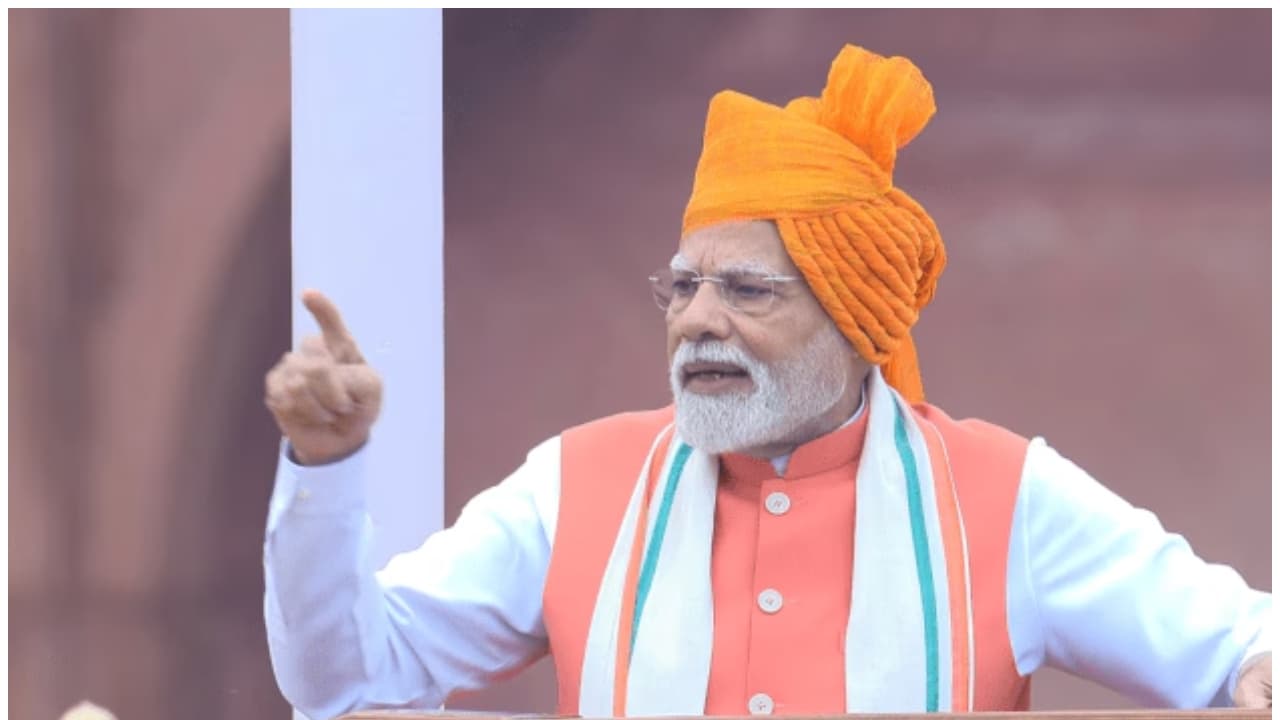PM Modi announced the ‘Sudarshan Chakra Mission’ on Independence Day, inspired by Lord Krishna’s divine weapon, to develop an indigenous, integrated air and missile defence system safeguarding India’s key sites against evolving multi-front threats.
New Delhi: In his first Independence Day speech from the ramparts of the Red Fort in the national capital in the aftermath of Operation Sindoor and 12th in a row since 2014, Prime Minister Narendra Modi on Friday announced the launch of ‘Sudarshan Chakra Mission’, aimed to protect the country’s strategic, civilian, and religious sites from potential enemy attacks. Taken cue from the Mahabharata, wherein Lord Krishna uses a divine weapon – the Sudarshana Chakra, to uphold dharma and vanquish evil. Coincidentally, his announcement came a day before Janmashtami, a festival celebrated to commemorate the birth of Lord Krishna, the eighth avatar of Lord Vishnu in Hinduism.
Scroll to load tweet…
The festival, Janmasthami, signifies the victory of good over evil.
What is ‘Sudarshan Chakra Mission’?
Though the details have not been shared, the experts believe it would integrate the Indian armed forces air defence system and ballistic missiles for offensive and defensive firepower capabilities. An official stated it could be in line with America’s Golden Dome and Israel’s Iron Dome.
The Golden Dome, which was announced by the US President, Donald Trump recently, would be build as a layered, Integrated Air and Missile Defence architecture to protect the US homeland from evolving threats. It will identify incoming projectiles, calculate trajectory and deploy interceptor missiles to destroy them mid-flight, safeguarding the homeland.
Israel’s ‘Iron Dome’ is also a multi-layered defence system known for stopping aerial attacks. Deployed in the 2010s, the Iron Dome has intercepted thousands of incoming rockets from Palestinian militant outfit Hamas and Lebanon’s Hezbollah, with Israel claiming a success rate of over 90 per cent.
Major General Sudhakar Jee, an expert on defence and strategic affairs told Asianet Newsable English that the country’s current missile defence systems focus on interception rather than pre-launch targeting of adversary missiles. “Works are at an advanced stage on DEW (Directed Energy Weapons). It is being designed to defeat a growing range of threats to military forces and infrastructure across all domains.”
“DEW uses focused electromagnetic energy to engage and neutralize enemy threats and assets. These weapons encompass high-energy lasers and high-power electromagnetic systems, including millimeter wave and microwave weapons,” he said.
“It can degrade or disable electronic systems without completely destroying them.”
A source in the defence and security establishment said that India may soon go on for additional procurement of Russian S-400 air defence system, which is also called as “Sudarshan Chakra” in India.
Currently, India is operating with three S-400s regiments along the western and northern borders. The source further added that with deployment of more S-400s units they will cover the entire airspace over the line of control with Pakistan and line of actual control with China.
“In the next ten years, by 2035, I want to expand, strengthen, and modernise this national security shield. Drawing inspiration from Lord Shri Krishna, we have chosen the path of the Sudarshan Chakra…The nation will be launching the Sudarshan Chakra Mission.”
“The entire modern system should be researched, developed, and manufactured in India, harnessing the talent of our youth. This powerful system will not only counter terrorist attacks but also strike back at the terrorists,” he said.
What prompted PM to announce Sudarshan Chakra Mission’s launch?
During Operation Sindoor, as per the experts, Beijing was involved in helping Pakistan with real-time intelligence, including satellite data and surveillance inputs. China also shared live information on Indian deployments even during DGMO level talks.
“It was more like a shadow of two-front war.”
Another source added that since the global order is fast evolving and concerns over cyber warfare, hybrid threats, and sabotage of strategic assets are increasing must be one of the reasons that the prime minister emphasizing on indigenous technologies, moving away from dependency on foreign systems, reinforcing national sovereignty in security architecture.
Operation Sindoor
On May 7, India launched Operation Sindoor, in response to the April 22 Pahalgam terror strike in Jammu and Kashmir, to demolish the terror hubs present deep inside Pakistan and Pakistan-occupied-Kashmir, which was focused, measured, and non-escalatory. However, Pakistan retaliated on the same day and targeted the Indian military as well as civilian installations.
Subsequently, India launched offensive operations against Pakistan military establishments while activating its comprehensive and multilayered air defence architecture, including S-400 air defence system. The Russian-origin system had played a critical role in neutralizing Pakistani’s aerial systems, including the Shaheen-3 ballistic missile over Hisar in Haryana.
After its setback during Operation Sindoor, it is worth mentioning that a day ago on August 14, — its Independence Day, Prime Minister Shehbaz Sharif announced the creation of a rocket force modelled on the Chinese template.
PM Modi also stated that the Sudarshan Chakra’s capability would allow India to strike enemies with precision.
